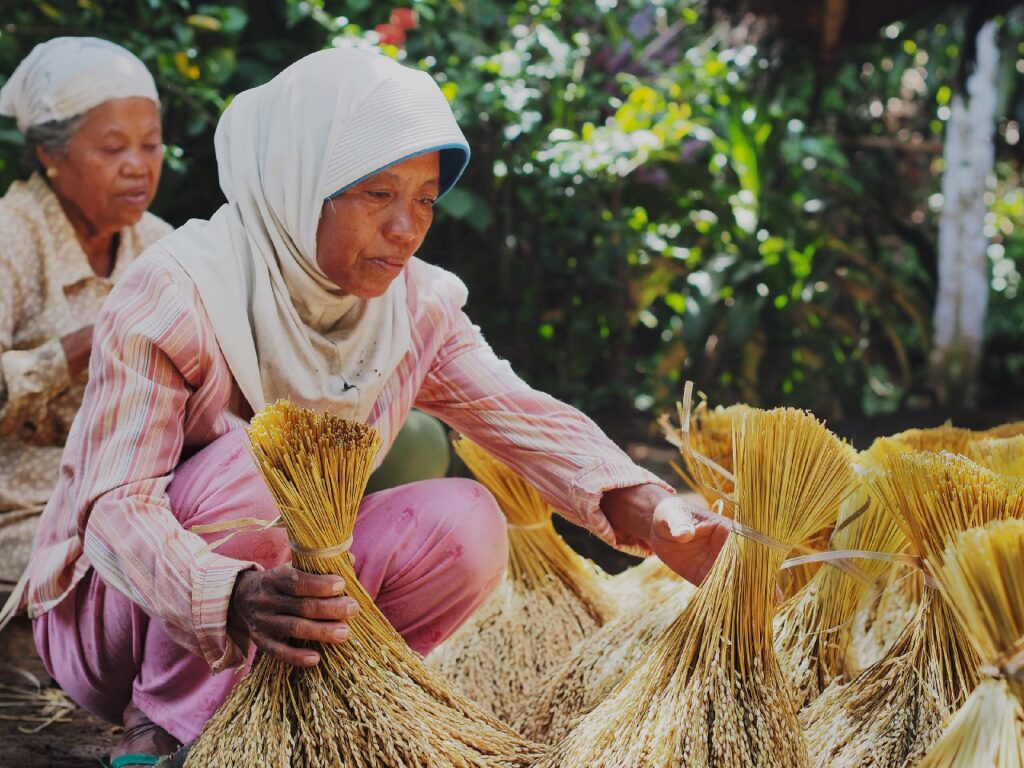Assessing food security in Indonesia, the government has implemented an ambitious program known as "food estate". The food estate has been running since 2019 until now. In initial planning, the food barn had a budget of IDR 1.9 trillion in 2020-2021. Meanwhile, in 2022 it will reach IDR 4.1 trillion.
Although it appears to be a proactive step to ensure a sustainable food supply, unfortunately, this approach does not fully reflect a deep understanding of the essence of food security.
One of the main weaknesses of the program is the lack of focus on diversifying food production. Food estate is more focused on developing large areas of land for certain commodities, without considering the diversity of food sources.
In fact, true food security requires a variety of food production to be able to face various challenges such as climate change, natural disasters and plant diseases.
As a result, many food security projects have failed in a number of areas. For example, in North Sumatra, horticultural crops are starting to be planted. In total, the government has planned a food estate in North Sumatra of around 61,042 hectares.
But in fact, farmers actually experience failure in the first and second planting periods. They even had to lose their traditional land as well as their original commodities – andaliman and frankincense forests –.
Failures were also found in food storage projects in forests, peatlands and in traditional areas in Central Kalimantan. With a land area of 31,719 hectares prepared for cassava fields, almost half of it is idle.
Meanwhile in Papua, the presence of this food estate will threaten the loss of two million hectares of Papua's traditional forest area. You can imagine, right?
The often overlooked aspect of ecological sustainability is one of the factors. Excessive land use without considering long-term environmental consequences can damage natural sustainability and threaten long-term food security. The government should pay more attention to environmentally friendly agricultural practices and traditional knowledge in a number of indigenous communities.
Since ancestral times, indigenous peoples in various regions in Indonesia have formed rich local knowledge and unique food security systems. This knowledge not only reflects local wisdom, but is also a strong foundation in maintaining community food security for centuries. Through traditional practices passed down from generation to generation, indigenous peoples truly understand the local ecosystem and adapt their farming patterns to the surrounding environment.
For example, in the To Kulawi traditional community, the term Pampa is known, which is a traditional zoning of indigenous communities, the authority for management and use of land owned by women. Pampa is a 'second kitchen' for women, where they grow various kinds of plants, such as; cassava, sweet potato, vegetables, as well as plants that produce kitchen spices such as onions, peppers, tomatoes. Also fruit plants, chocolate, wood, pandan and plants for craft materials.
There are also people in the Anak Dalam Tribe (SAD) community who are now cultivating fish. They not only raise livestock, but process it into smoked fish for sale. The production is still very traditional. So, it takes a day to be consumed. In fact, because the harvest results from fish rearing carried out in this community are relatively high, now they have come up with the idea of processing it into other products, namely; Patin Fish Floss.
Then, the Kasepuhan Cirebon indigenous people formed the sugar ant group. They also took over production and even distribution of ant sugar in their communities. With the existence of this group, the impact of improving the economy on society will be more humane.
If in the past they were paid less than usual – due to distribution through middlemen – with the existence of this group they could be paid much more expensively. The bonus is that they can get money from the savings from the people's investment.
In the context of food estates, the government has never paid greater attention to the local knowledge of indigenous communities. In fact, involving indigenous communities in decision making regarding food resource management will create greater involvement and ensure that the policies implemented truly reflect the needs of the community itself.
Lastly, the implementation of food estates must be inclusive and economically sustainable. This includes providing financial and technical support to farmers and indigenous communities, ensuring fair distribution in food supply chains, and creating economic opportunities for local communities. Without sustainable and inclusive support, government efforts to achieve food security may just become rhetoric without significant impact.
It is time for the government to return full food sovereignty to indigenous communities. Because talking about food is not only about commodities, but also about people's survival.
Food security cannot be achieved optimally only through approaches such as food estates without paying attention to critical aspects such as diversification, ecological sustainability, participation of indigenous communities, and support for small-scale agriculture.
The government must improve its focus and strategy to create a more comprehensive and sustainable framework to ensure strong food security in Indonesia.


